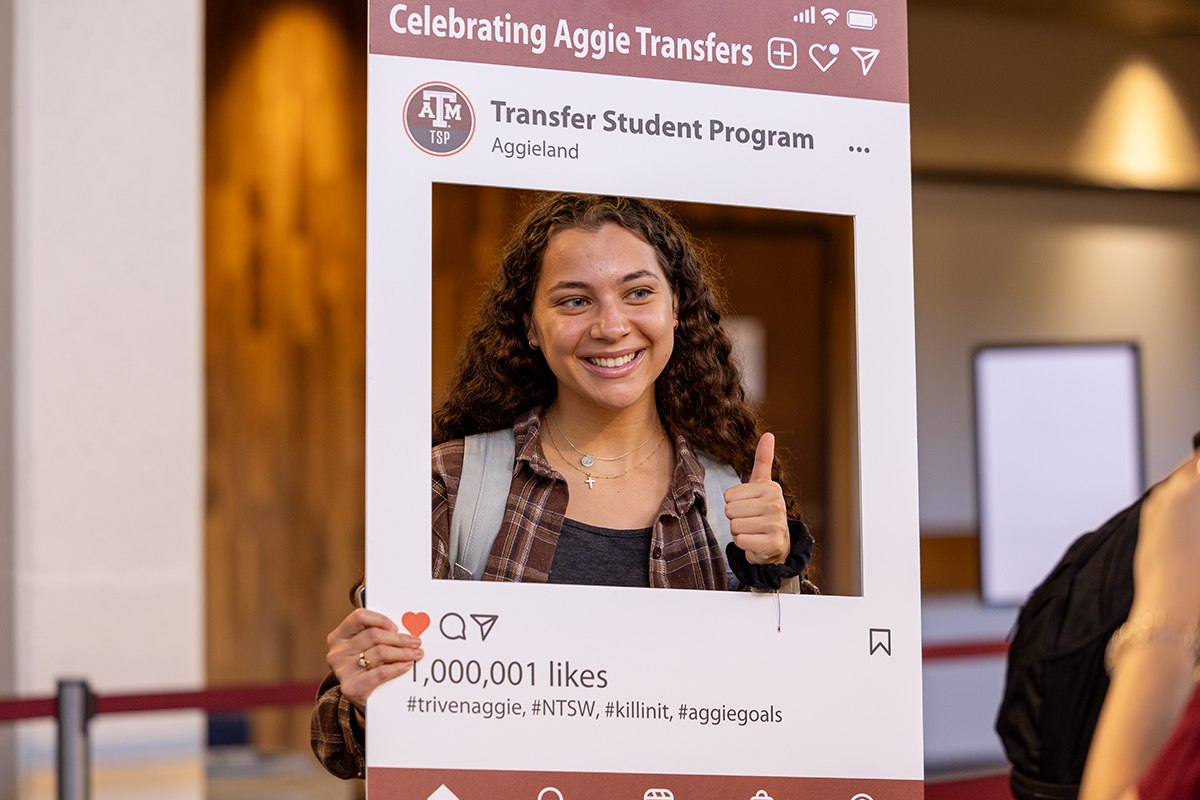
In honor of National Transfer Student Week (NTSW), held annually during the third week of October, Texas A&M University is highlighting the contributions and successes of its transfer student community.
At about 3,000 students, transfer admits make up about 4% of the undergraduate population at Texas A&M. Notably, their retention rates and four- and six-year graduation rates are higher than those of traditional students.
“I think many on our campus will be surprised that the year-to-year retention and graduation is actually higher for our transfer students,” said Dr. Timothy P. Scott, Vice Provost for Academic Affairs and a professor in the Department of Biology. “These rates speak to the quality of transfer students we admit and the effort the university makes to welcome them and support their success.”
Texas A&M offers various transfer-specific resources, including the Transfer Student Program (TSP), which features the Transfer Village and peer mentors, and T-Camp, an orientation experience designed specifically for transfer students. This semester, Texas A&M launched the Transfer Luminary Scholarship Program, furthering its commitment to transfer student success.
“The Transfer Luminary Scholarship Program is newly established, awarding scholarships to 50 students from the fall 2024 cohort,” said Val Coleman, assistant director of the TSP. “The TSP provides academic, acclimation, and mentoring support, and it aims to cultivate a feeling of community among transfer students and the Luminary Scholars.”
Transfer students are a critical part of our student body, They bring a different experience to campus that can help us learn how to serve all students better.
In recognition of NTSW, two Aggies shared their experiences as transfer students on campus, including Raeesah Khan '25, a senior majoring in psychology within the Department of Psychological and Brain Sciences.
Khan attended Lone Star College before transferring to Texas A&M, a university that she says felt like a perfect fit for her.

“A&M was an opportunity to grow outside of Houston, and I felt like I needed the change of environment to meet new people,” Khan said. “Plus, I’ve been hearing about the Aggie Network since college became a thing in my life, so that’s something I considered.”
During her first year as an Aggie, Khan struggled with imposter syndrome, a feeling of self-doubt where an individual often questions if they belong, even when they have earned their place.
“It was definitely a really big adjustment because I never realized how big the classes would be,” said Khan. “At first I was overwhelmed, but then I realized I needed to study differently.”
After navigating the challenges she faced as a transfer student, Khan realized that she wanted to help other transfer students do the same. That’s when she applied to be a Transfer Peer Mentor at the TSP.
“Being a mentor is beneficial for both me and the students,” said Khan. “It’s helped me bond with other transfer students because I’m able to learn from whatever experience they’re having. The TSP is a great way to get to know resources.”
Students can visit the TSP and Transfer Village, located on the second floor of Hotard Hall, to learn more about transfer student resources. Additionally, students can follow @successtamu on Instagram for information about NTSW events on campus.
“Transfer students are a critical part of our student body,” Scott added. “They bring a different experience to campus that can help us learn how to serve all students better.”
This story was originally published by Texas A&M Today.
